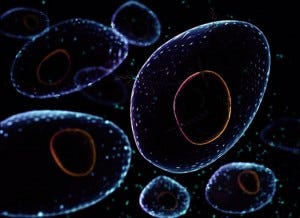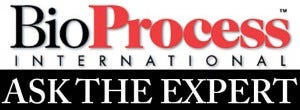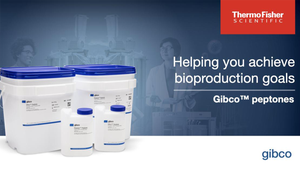Increasing Protein Yield - Optimization of Suspension CHO Transient Transfection
January 8, 2015
Sponsored by Mirus Bio
with Dr. Laura Juckem
High-efficiency transient transfections of suspension- adapted Chinese hamster ovary (CHO) cells enable researchers to bridge upstream and downstream processes. This helps to provide confidence that a recombinant protein will have the same properties throughout its development as a biologic. As drug targets become increasingly complex, proper protein folding and posttranslational modifications become more relevant. Early upstream work with the same cell type — e.g., CHO instead of HEK 293 cells — ensures similar product quality from beginning to end.
Preclinical drug discovery benefits from rapid screening of many different protein constructs with transient transfection. Usable protein can be obtained through transient transfection in under a week while stable cell lines are in development, which can take over three months. These methods are enabled by major advances in recombinant protein production over the past decade: cell-line engineering, optimization of expression vectors and serum-free media formulations, and advances in nucleic acid delivery.
Juckem’s Presentation
Three important factors influence yield in transient transfection of suspension- adapted CHO cells: growth media formulation, cell density at the time of transfection, and intrinsic properties of a given protein.
Media Compatbility: Highly anionic compounds in serum-free, chemically defined media formulations can impair transient transfection. Because commercially available formulations are proprietary, we empirically tested several of them. Using CHO-S cells, we measured antibody production from clarified supernatants at day 4 after transfection with a standard sandwich ELISA against the human Fc region.
We used three transfection technologies: the TransIT-PRO Transfection reagent from Mirus Bio, 25-kDa Linear PEI from Polysciences, and the FreeStyle MAX transfection reagent from Thermo Fisher Scientific. We looked at five different media: two from Becton Dickinson, two from Lonza, and FreeStyle CHO expression media from Thermo. Expression levels varied by medium and transfection method. The best combination we found was our TransIT-PRO reagent with the FreeStyle CHO expression media.
With some other formulations, we saw ample titers using the TransIT-PRO reagent although they were barely above detection with either Linear PEI or FreeStyle MAX technologies. This suggests that TransIT-PRO has better broad-spectrum media compatibility. That can be advantageous when you’re working with internal media formulations or those you can’t change.
Cell Density: We found cell density at the time of transfection to be a critical parameter for improving yield, especially with our own reagent. We spun CHO-S cells down and resuspended them at varying densities. To minimize variability, we added the same transfection complex to those cells and measured secreted antibody at days 3, 4, and 5. Yield increased stepwise with higher cell densities: about eightfold going from 2.5 mg/L at 500,000 cells/mL up to 20 mg/L at 4 million cells/mL.
Next, we considered transfection- complex binding and uptake as well as green fluorescent protein (GFP) efficiency at different cell densities. But we found no difference with either parameter Just having more cells present during transfection increases the total protein with TransIT-Pro reagent.

Protein Differences: To address intrinsic protein properties, we took five different human IgG sequences from commercial products and had them codon-optimized and synthesized in the same two-vector backbone to express monoclonal antibodies (MAbs). We compared expression levels of those five MAbs using a standard sandwich ELISA. The most dramatic difference we saw was between MAb 1 (8 mg/L) and MAb 3 (<2 mg/L): up to a fourfold difference in yield depending solely on the antibody sequence.
With protein yield so tightly linked to growth-media formulation, transfection reagent selection, and cell density and health at transfection (as well as the intrinsic properties of your protein), optimizating these critical parameters will ensure experimental success.
Questions and Answers
Q: How does the transfection reagent formulation affect protein production?
A: A high-efficiency and low-toxicity reagent allows more cells to be transfected initially, which will provide higher transgene expression levels and subsequently better protein yields.
Q: How does cell density affect protein yield?
A: We were surprised that it had such an effect. It worked well with a high- efficiency transfection reagent that combines and takes DNA into a large percentage of cells. By transfecting more cells, you increase that total biomass available for production. But if you’re growing cells in batch culture at high density, they may crash sooner depending on the ability of your media to support that high-density culture.
More Online
The full presentation of this “Ask the Expert” webcast — with data — can be found on the BioProcess International website at http://bit.ly/ATE-transfection.
25
You May Also Like





